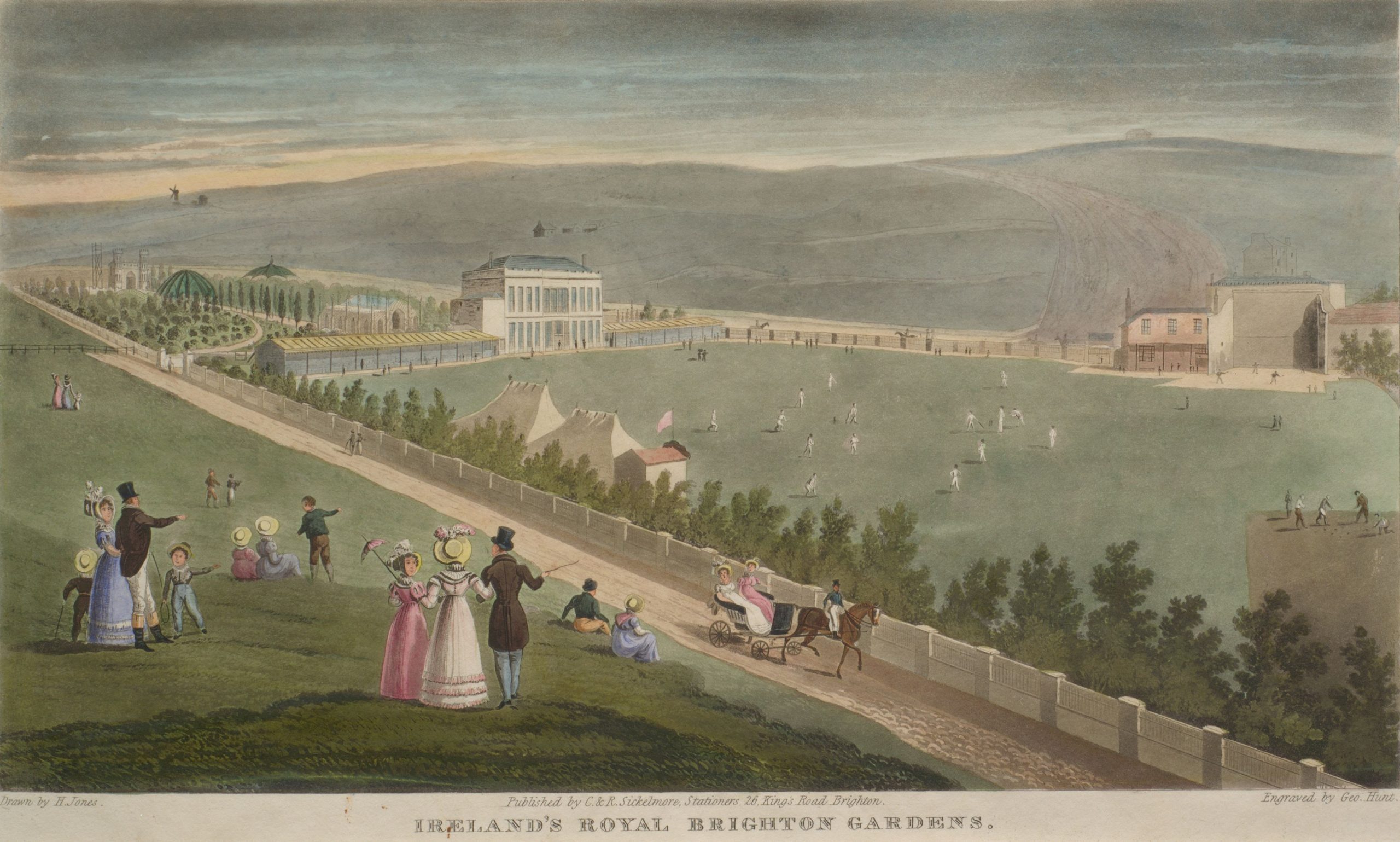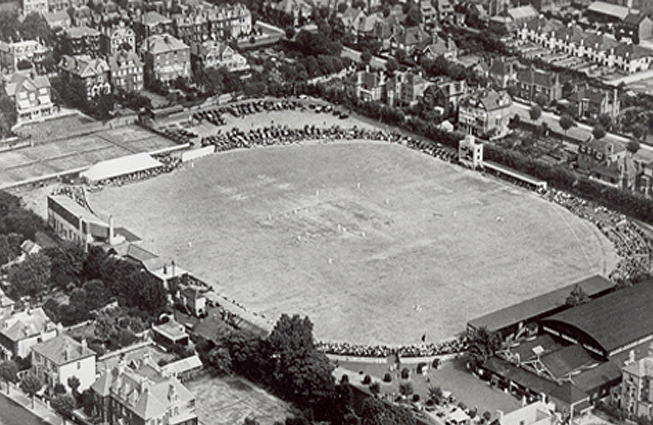The Level
Cricket has been played in Sussex since the c17th with references to the game as early as 1622 when six parishioners were prosecuted for playing cricket in the churchyard on Sunday at Boxgrove, Sussex. From this time there were references to not just playing cricket but the playing of cricket and the role of betting. We know that in 1694 a member of the Pelham family had a ‘Wagger about a cricket match at Lewis’. During the c18th cricket spread throughout the county of Sussex with the Slindon team having players who played for England teams. The first reference to a game played between counties is in 1728 when Sussex played Kent at Penshurst.
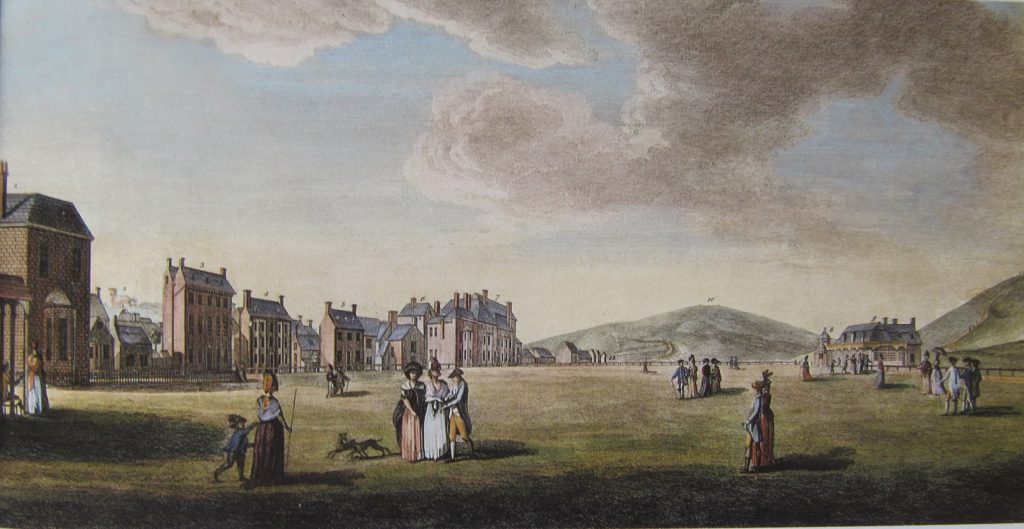
The first reference to a game played in Brighton was on 22 July 1754 when a combined team of Brighton, Bolney and East Sussex took on Guildford, Ripley, Thursley and part of Surrey at Guildford. We do not know where this game was played but it might well have been on The Level which at that time was the main recreational area in the developing resort of Brighton.
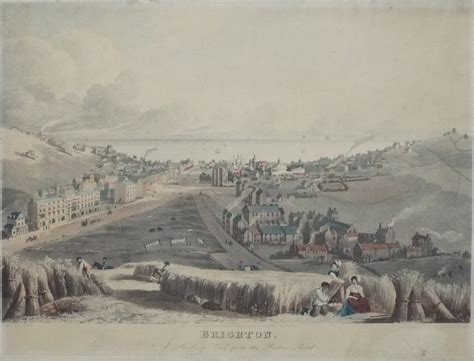
The Level was often waterlogged
The Level in the mid-c18th was a much larger area than the Level we know today which is bounded by Union Rd, Ditchling Rd and Lewes Rd. The Level then described an area of land that was often waterlogged through having an intermittent stream running just below the surface. It stretched from the area of what is now Park Crescent right down to what is now Victoria Gardens. South of the Level (The Steine) was the area that fishermen used to work on their nets, but as the resort of Brighton developed between 1750 and 1780 this area came under threat from visitors who wanted to use the area for ‘promenading’ as the area was shaded from the prevailing south west winds and also close to much of the resort accommodation and facilities. Much of The Level was owned by Thomas Read Kemp, one of the dozen of so men who owned all the land in Brighton.
Cricket and running banned from The Steine
In 1777, The Steine was enclosed and by the late 1880s was being used for a variety of games and spectator sports including cricket although in 1787 the MC (Master of Ceremonies, Captain William Wade) banned cricket and running from the enclosed areas. In 1793 The Steine was further improved for visitors when the Winterbourne stream was put in a drain and the turf improved. All games were then moved to the North Steine (now Victoria Gardens) until 1818 when it too was enclosed. That left The Level north of the North Steine as the only large recreational area in the resort.
By 1780 Brighton had acquired all the facilities that visitors expected to have in a resort and it was rivalling Bath , Margate and Scarborough. It had the patronage of members of the royal family from the 1760s with the Duke of Gloucester, the Duke of York and the Duke of Cumberland regular visitors. The Prince of Wales visited for the first time in 1783, when he was 21, and then came again the following year, before acquiring Kemp’s lodging house in 1787 which he converted into a seaside marine villa. The Prince took part in country pursuits, including cricket, and riding on the Downs.
Kemp lays out a cricket ground
In 1791 Kemp laid out a cricket ground for the Prince on the Level which became The Prince of Wales ground, sometimes known as The Prince’s Ground. The Prince had a marquee established on the ground and dined there frequently. The ground was, according to John Ackerson Erredge, located ‘immediately in front of the Peircy Arms Houses, Lewes Road’ The cricketing ground can be seen on the 1792 Terrier map of Brighton and would seem to occupy the current Level and part of the area north of Union Rd.
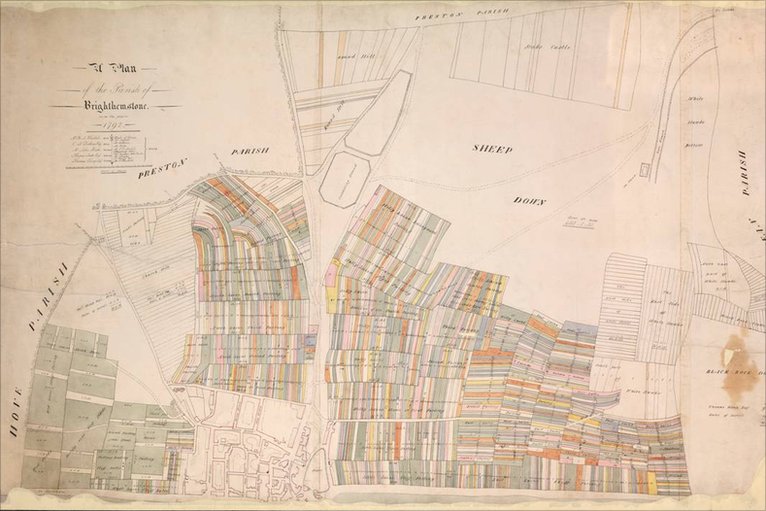
That same year, 1791, a Brighton Cricket Club was established and prosperous townsmen and visitors teamed up to play teams from afar. One of the earliest games was against Middlesex. Central to the game was gambling with the teams playing for prize money. Games were frequent particularly when the Prince was in town which was usually between the months of June and September, which was regarded as ‘The Season’. John Goulstone in his book ‘On The Level’ refers to fifteen games being played between 1809 and 1822 on The Prince of Wales’ ground and gives details of some of these matches. John Marshall in his book on ‘Sussex Cricket’ gives details of a match played on the ground in 1802 when East Sussex beat West Sussex by five wickets. The Encyclopaedia of Brighton by Timothy Carder mentions three matches played at the Prince of Wales’ ground: On 7-8 August 1792 Brighton beat Hampshire and followed this up with a win against MCC on 23 August 1792. The last match was when Brighton played Dorking in August 1822.
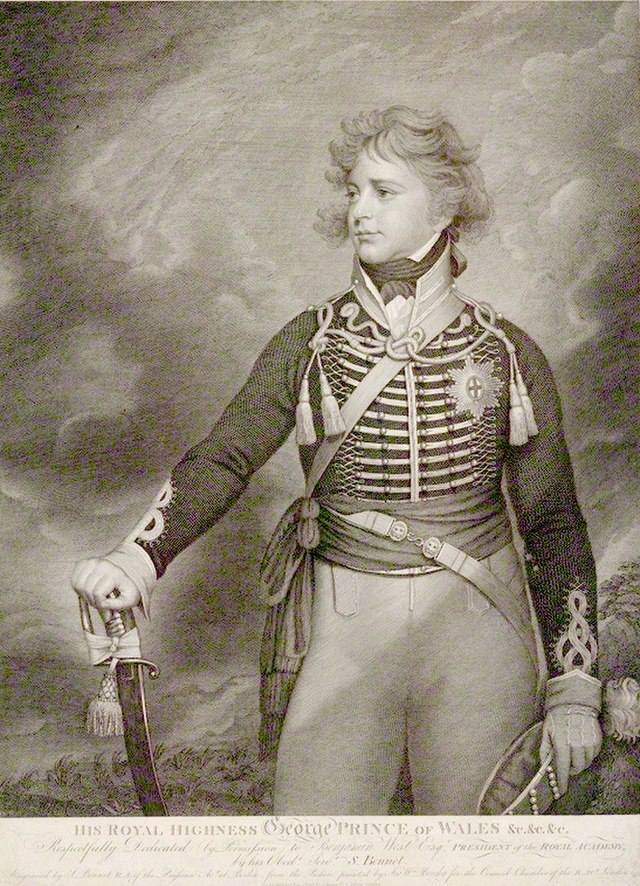
A number of events were held on The Level
As well as The Level being a centre for cricket, as the town’s only large recreation area, it was used for a great many large communal events. In August 1789, The Prince hosted a party for the birthdays of the Duke of York and the Duke of Clarence Two oxen were roasted and plenty of ale was consumed before a ‘grand’ cricket match was played as well as stool-ball and a variety of other activities.
On 11 August 1807, in the presence of The Prince of Wales and members of the Royal family The Level was the occasion for a sparring match between two of the country’s very best fighters, Gully and Cribb.
On 12 August 1814, a great Peace Festival was held on The Level to celebrate the overthrow of Napoleon and his incarceration on the island of Elba. Up to 7,000 townsfolk were accommodated on rows of tables and fed on ‘roast beef and plum pudding, garnished with hogsheads of ale and brown stout’. The sounding of a bugle began and ended the feast before the rest of the day continued with various entertainments and sports, including dancing, stool-ball, kiss-in-the-ring, jumping in sacks before everyone formed a long line and headed for Castle Square where ‘God Save the King’ was sung.
The Level was also the location for a number of sheep fairs, the first one being on 4 September, 1807 when 20,000 prime South Down sheep were on sale, although after a few years the fair had to find another location. As with the previously held Toy Fair, and the annual Autumn and Spring pleasure fairs, such events seemed to be incompatible with an aristocratic resort town. In 1820 George III died and the Prince Regent ascended the throne. George soon retired from cricket and consequently the Prince of Wales ground was given up. Thomas Read Kemp along with the other owners of The Level decided to invest a part of the area in trustees who would develop the area for the town. Soon the area we now know as The Level was landscaped by A.H. Wilds and Henry Philips and Union Rd constructed to link Ditchling Rd with Lewes Rd.
Ireland’s Gardens
The lease to ten acres of the area north of the newly built Union Rd was then bought by James Ireland who landscaped the whole area into a series of pleasure gardens and a cricket ground, which were compared favourably with the best gardens in rival resorts. Thomas Read Kemp contributed £2,000 towards the huge cost of the enterprise which at first attracted large numbers of visitors.
Ireland was an undertaker and draper based at 10 North St but his investment in his ‘Gardens’ ruined him but for a time he provided an amusement and pleasure park, the like of which the town had not seen and would not see again.
Around the ten acres there was a flint wall with a grand entrance onto Union Rd. Through the lodge and gateway at the south west, visitors could access the cricket ground and the nearby bowling green and billiard room. At the south east side was situated the Hanover Arms Inn and extensive stables , run by Ireland, and which was close to a fives court. The gardens were north of the cricket ground and between the two was a two storey building which housed a promenade saloon with various reading rooms, and a bar. North of the building was a grotto, an aviary, another area for bowls or dancing and further north a Gothic building with seats and tables leading to winding paths and a bridge to a Gothic ‘castle’. Beyond that was the maze, which according to a contemporary account in ‘Views of Brighton’ 1824, was better than Hampton Court Maze. The cricket ground was soon designated The Royal Brighton Gardens by George IV.
The cricket ground was opened in 1823 and in one of the earliest games of cricket played at Ireland’s Gardens, Sussex played against the MCC for the first time and won. This year, 1823, was the year in which William Lillywhite made his mark as a bowler and also the year that printed scorecards appeared at a ground in Brighton for the first time. In 1827 a series of matches were played between All-England and Sussex and the third and last of the series was played at Ireland’s Gardens starting on 24 July and won by All-England by 24 runs. £240 was taken on the gate in sixpences.
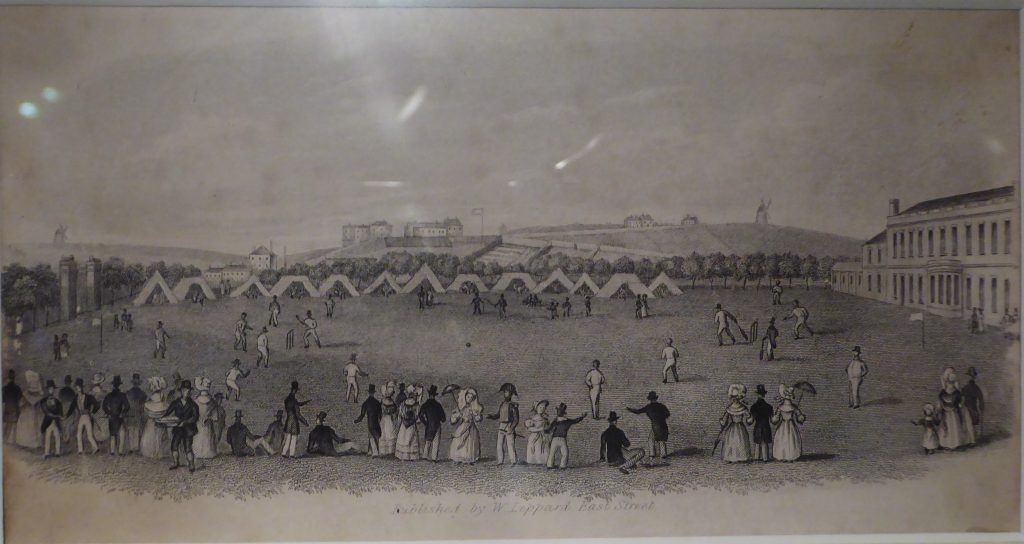
The formation of a county club
It was whilst Ireland’s Gardens was the principal ground in Brighton that the Sussex club was formed. Marshall describes the events leading up to the formation on pages 34/5 of his book Sussex Cricket: The Brighton Gazette commented: ‘’We have much pleasure in referring our readers to an advertisement in another part of the paper under the heading of ‘Cricket’ by which it will be perceived that a meeting is to be held tomorrow at t he Town Hall with a view to establishing a Cricketing Fund. We have frequently pointed out the advantages resulting from cricket matches; and we hereby wish success to the project.’’ He goes ona couple of paragraphs later, On 23 June 1836 the Brighton Gazette reported the meeting over which Captain Heaviside presided, and recorded the passing of a resolution ‘’that in the opinion of this meeting it would contribute greatly to the benefit of the town and to the amusement of the visitors and inhabitants if a Cricketing Fund for making matches were established – to be called the Sussex Cricketing Fund’’.
On page 37 Marshall refers to the events of 1839: There is no lack of evidence about the formation of the county club in 1839, for we have not only the original circulars and rules, but lists of committee-men and members. The moving spirit was the Rev. George L. Langdon, the first secretary, whose name was appended to the circular sent out to many gentlemen in the county telling them that ‘members of the newly-instituted Cricket Club request the honour of proposing you at their next meeting’’ and that their support ‘would greatly promote the interest of cricket in the county. The response was excellent and, with the rules, the organisers were able to publish a list of sixteen committee-men headed by Earl Winterton. Marshall then goes on to list the first rules and the report of The Brighton Gazette on the dinner at Pegg’s Hotel, ‘’We hail with pleasure the formation of a club on so respectable a footing for the promotion of this truly game’’.
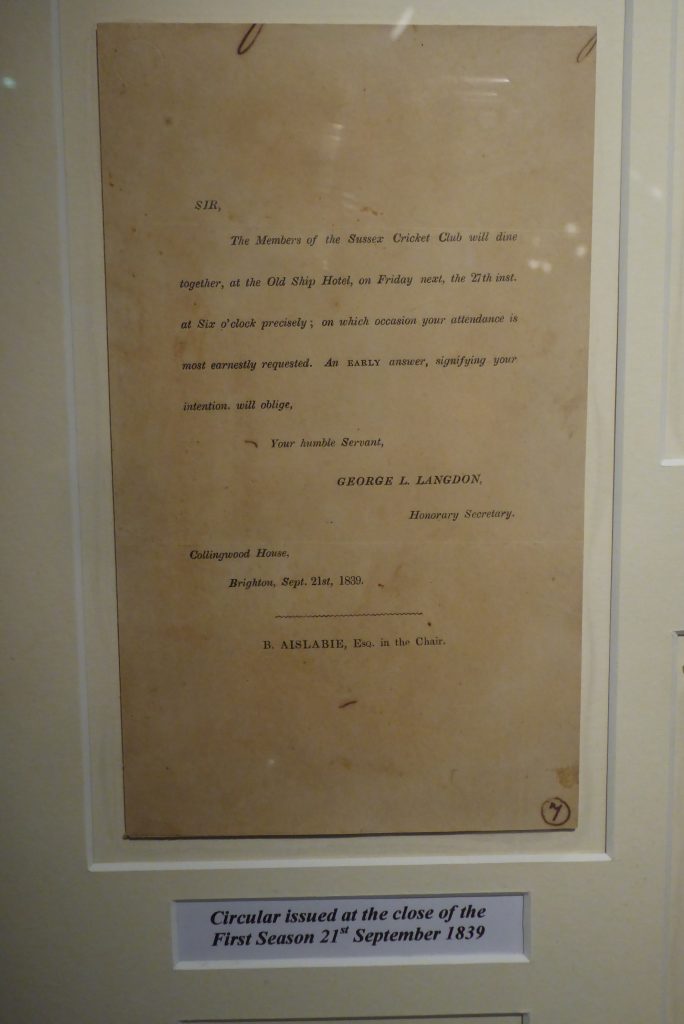
Several Owners
One of the most remarkable matches played at Ireland’s Gardens was in August 1844 (now called T. Box’s Ground) when the newly established Sussex CCC took on MCC and Mr C.G. Taylor scored a century not out, the first century in the series of matches played between the teams. At one point he hit 42 runs in 15 minutes. The match saw some exceptional scoring with 830 runs made altogether.
There were a series of different owners in the period the ground operated. According to the booklet produced by NF Epps, Marylebone CC versus Sussex CCC in 2004, which gives details of games played on the ground, Ireland would seem to remain the owner until 1835 after which G. Brown became the owner until about 1841 when Harvey became the owner. By 1844 T. Box was the owner and he remained the owner until the ground closed down in 1847 .
In the 1830s another ground opened up in the area, where Montpelier Crescent now stands. It was opened by a Mr Lee and became known as Lee’s Trap Ground and sometimes Temple Fields as it was in the vicinity of Thomas Read Kemp’s residence The Temple. It was also known as the Montpelier Ground. Although the ground was opened up in 1831 it was not until 1834 that it was used regularly for cricket, mainly by Brighton Cricket Club. William Lillywhite, the proprietor of the Sovereign Inn, Preston St, acquired the ground in 1836 and his benefit was played on the ground in 1842 although only one first class cricket match was played at the ground. On August 15th and 16th 1839 the Gentlemen of Sussex played the MCC in a game won by the Gentlemen of Sussex with W. Lillywhite himself getting six wickets in the MCC first innings.
The Brunswick ground
In the late 1840s, with the former gardens looking more like a wasteland, and Brighton needing more and more housing due to the influx of workers to find employment at the various works around the newly arrived railway, the cricket ground was closed down for development. A new ground had to be found for Sussex, and one that would not be threatened by encroaching development. It was a Mr Gausden, a land and estate agent from Hastings who in 1848, found a plot of suitable land on the seafront in Hove, close to what is now 3rd and 4th Avenues. The only nearby development was a farm, in Church Rd and a few cottages. Mr Gausden established a cricket ground, with the official title of the Royal Brunswick Cricket Ground with a nearby hotel and this facility became the home of Sussex CCC for the following twenty three years until with the inevitable growth of Hove, it too was needed for housing development.
In 1852 Gausden sold the lease to G. Knight who six years later transferred the lease in turn to Tom Box who also took over the running of the hotel on the ground. Eventually in 1863 the County club acquired the remaining part of the lease, thereby owning their own ground for the first time.
One of the first matches played at the new ground was Sussex v MCC on August 13-14, 1849, a game which Sussex won by ten wickets. W.G Grace helped to make the ground famous when in 1864, when he was only sixteen, he described the ground as ‘beachy’ whilst making 170 and 56 not out.
In 1866 during the game between Sussex and the MCC played at the ground H. Killick was ‘absent 3’ in the Sussex first innings as he had failed to turn up in time for the re-commencement of his innings on the following day.
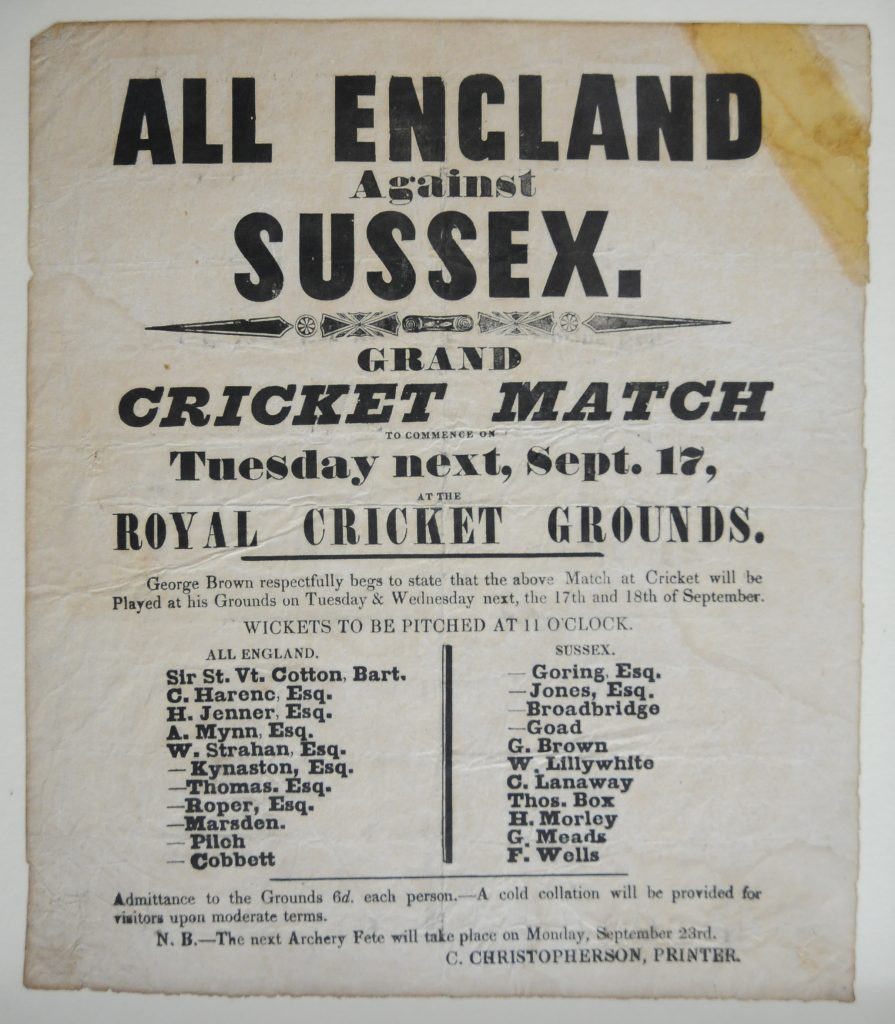
The Aborigines come to Hove
The ground was in 1868 the venue for two games played against the touring Aborigine team, the first team from abroad from any sport to tour England and Wales. The games attracted large crowds of around 7,000, no doubt attracted by the ways the players ingratiated themselves with the spectators. The aborigines mixed freely with the crowd ‘who supplied them liberally with cakes, biscuits, and sweets and sometimes a drink out of a flask’. The players also, at the end of the day’s play, indulged in Australian and English sports like hurdle racing, running backwards, throwing the boomerang, and throwing the cricket ball. There was even an event called ‘Dodging the cricket ball’.
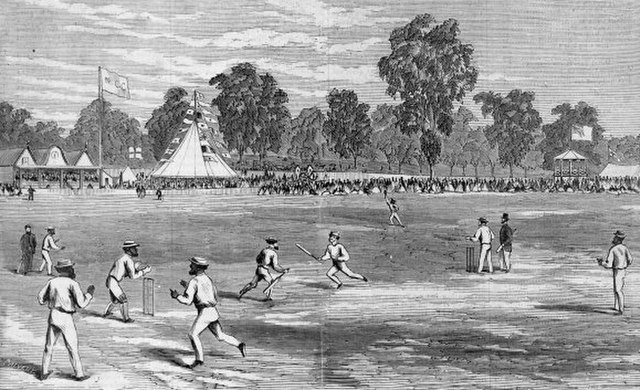
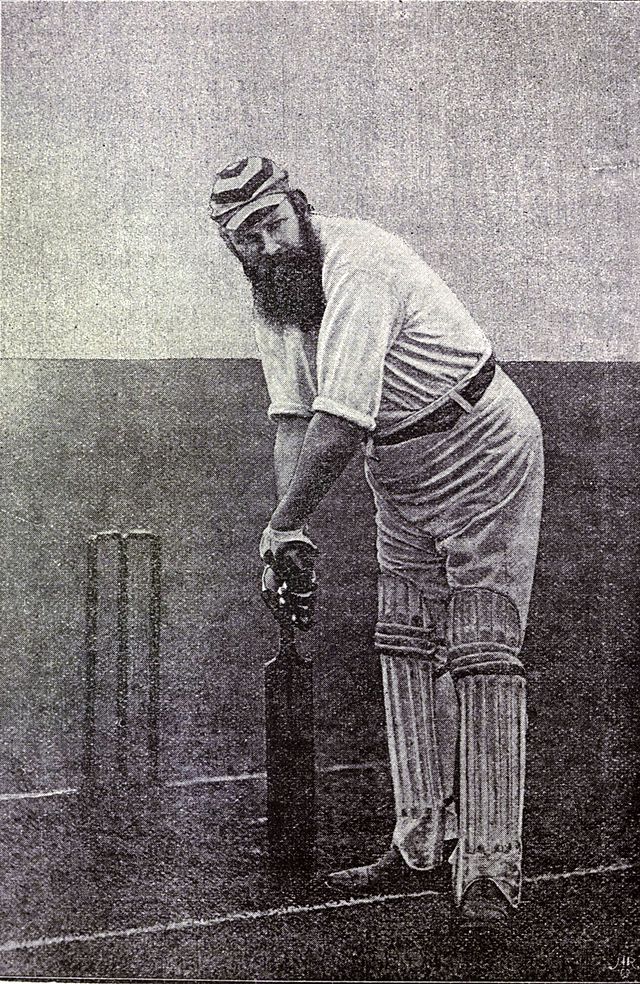
WG always did well by the sea
It was during the 1850s that Sussex began to play at grounds other than in Brighton when they played at Warnham Court, near Horsham (in 1853), at the Bopeep ground, St Leonards (1857) and at the Dripping Pan, Lewes (1860). In the game at the Bopeep ground against the MCC, John Lillywhite (9-59) and George S. Hooker (10-65) both bowled unchanged throughout both MCC innings.
By the 1860s the expansion of Hove meant that the ground was needed for development and on August 14-16, 1871 the last match of any importance was played at the ground, a benefit match for John Lillywhite, during which 10,000 people attended and provided £700 to Lillywhite’s fund. It was in this match that W.G. Grace made 217. The lease to the ground expired on October 1, 1871 and a new ground had to found and prepared for the following season.
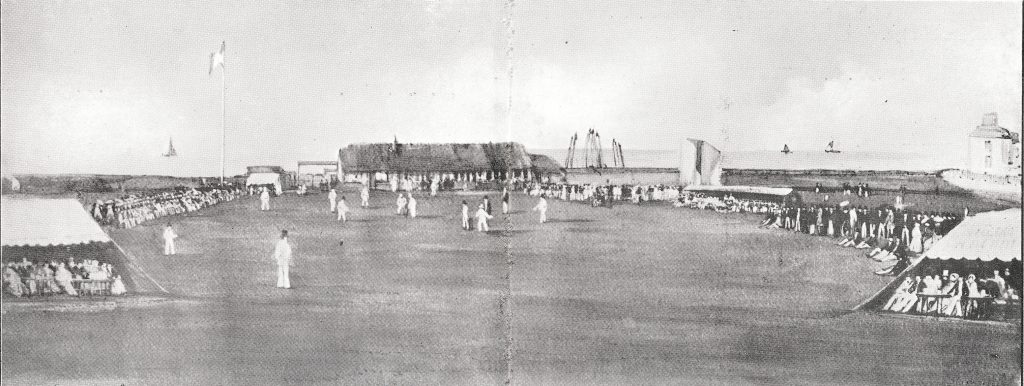
The turf was transported to the County Ground
The Trustees of the Stanford estate came to the rescue and offered a barley field of around nine acres to the club. A lease for twenty one years was signed, at an annual rent of £100 and Mr E. Spary was given the task of preparing the ground. A concrete boundary wall was constructed, and a row of young tress was planted, although a flock of young sheep soon ruined the young trees.
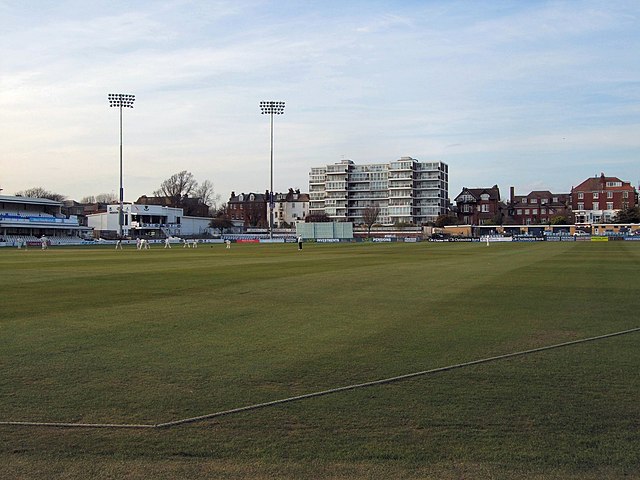
A hotel was built for £1,942 and a pavilion was erected for £600. To enable all of this to happen the club borrowed £1,500 from the Trustees. Some levelling was done to the ground although there was still a slope of about 20 feet from north to south and the turf from the old Brunswick ground was dug up and brought to the new ground. The ground was ready by May 1872 when the first match was played between Young Sussex Players and Young Sussex Gentlemen. The Young Players had a Gentleman, Mr Napper as their captain, whilst the Young Gentlemen had two Players, Fillery and H. Phillips, in their side. The man of the match was Fillery who took 17 wickets and made 29 and his side won.
WG played in the first county game
The first County match was played a month later on June 6-7, 1872 when Gloucestershire were the visitors. The game was spoilt by rain with play possible on just two days. Sussex made 123 and in reply Gloucestershire were 44 for four with W.G. Grace top scoring with 14 when no further play was possible. W.G Grace therefore had the distinction of playing in the last match at the Brunswick ground and in the first match at the Eaton Rd, County Ground.
